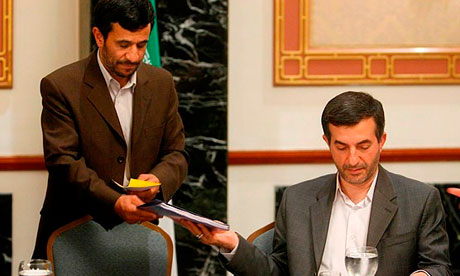 Raise a glass of bubbly along with Professor Rita Levi-Montalcini!* She was 102 years old last week. And is a Nobel Prize winner (Medicine, 1986) to boot. As only the fourth woman ever to be awarded the Nobel Prize, and the oldest living Nobel laureate, she deserves all honours, to put it mildly.
Raise a glass of bubbly along with Professor Rita Levi-Montalcini!* She was 102 years old last week. And is a Nobel Prize winner (Medicine, 1986) to boot. As only the fourth woman ever to be awarded the Nobel Prize, and the oldest living Nobel laureate, she deserves all honours, to put it mildly. “Italy -- and quite possibly the world -- has never seen a scientist quite like her,” the journal Nature wrote on the occasion of her widely celebrated 100th birthday.
Inspired Intuition
I do believe that I confront life not as a scientist, but as an artist, she declared in a video event aired on her birthday on the website Rita101+. The night-long online program celebrated her massive accomplishments in a wired event shared by hundreds of researchers on social networks.
A feisty life
Born into a well-to-do Jewish family in Turin in 1909, Rita Levi-Montalcini fought hard for her career from the beginning. First there was her father, who didn't believe in higher education for women:
Both parents were highly cultured and instilled in us their high appreciation of intellectual pursuit. It was, however, a typical Victorian style of life, all decisions being taken by the head of the family, the husband and father. He loved us dearly and had a great respect for women, but he believed that a professional career would interfere with the duties of a wife and mother...."I said I won’t be either a wife or a mother, but I will go on my way."
She entered the medical school of Turin where she studied under the famous Italian neuro-histologist, Giuseppe Levi. He gave her a superb training in biological science and introduced her to her first passion: the developing nervous system. Under Levi's attentive eye, she mastered a technique that would be key to her own successes, that of silver-staining nerve cells.
In 1936 she graduated with a summa cum laude degree in Medicine and Surgery, and enrolled in the three year specialization in neurology and psychiatry, still uncertain whether she should devote herself fully to the medical profession or pursue basic research in neurology.
"My perplexity was not to last too long."
In a sense, Benito Mussolini made the decision for her. In 1936, the Fascist dictator issued his 'Manifesto per la Difesa della Razza' (Manifesto for the Defence of the Race). Racial laws soon followed, barring non-Aryan citizens from academic and professional careers. All Jews -- including, of course, Levi-Montalcini and her maestro, Levi -- were ejected from Italian universities and public institutions.
The two alternatives left then to us were either to emigrate to the United States, or to pursue some activity that needed neither support nor connection with the outside Aryan world where we lived. My family chose this second alternative. I then decided to build a small research unit at home and installed it in my bedroom.Nerve fibres in the bedroom
Levi-Montalcini had recently come across a paper telling of experiments by embryologist Viktor Hamburger of Washington University in St Louis, Missouri. He had removed the growing limbs of chick embryos and found that doing so reduced the size of the ganglia, tiny structures that cluster together the nerve fibres emerging from the spinal cord and direct them on to their final destinations. Her research challenge was decided: to work out how nerves emerging from the embryo's developing spinal cord find their way to the budding limbs they will eventually innervate.
Armed with a regular supply of fertilized hen's eggs, and using tiny scalpels and spatulas fashioned out of sewing needles to do her dissections, she repeated Hamburger's experiments in her bedroom laboratory, adding to it the silver-staining method which allowed her to see the nerve fibres in much greater detail. She discovered that the ganglia did not, in fact, wither immediately. The neurons actually proliferated, differentiated and started to grow towards their targets -- but died before reaching them. She concluded that the problem was the lack of some growth-promoting factor that would normally be released by the budding limbs. Despite the upsets of war and having to go into hiding in Florence, she managed to publish her results in a Belgian scientific journal.**
When the war ended, Levi-Montalcini returned with her family to Turin where she resumed her academic position at the University. In 1947, Prof. Hamburger, who had read the Belgian paper she had published, invited her to St Louis for a semester to repeat and extend her experiments.
She had planned to remain in St. Louis for ten to twelve months, but her stay extended to 26 years.
Nerve Growth Factor (NGF)
One of Hamburger's graduate students had grafted a lump of mouse sarcoma tumour onto a chick embryo and found that nerve fibres grew and invaded the tumour mass more abundantly than the limb bud. This experiment made her antennae vibrate. She became convinced that the transplanted tumour tissue was releasing the same sort of factor she claimed the developing limbs released. She repeated the experiment, ingeniously placing the tumour outside the sac containing the embryo: although physically separate, this area shares the embryo's blood supply. It was a killer experiment. Nerves sprouted and grew wildly, supporting her theory that the tumour was releasing a factor that diffused into the blood and travelled to the embryo.
Two Mice in a Handbag
Now, she had to learn how to culture isolated chick-embryo ganglia, and knew of only one laboratory that could do so. So she put two live, tumour-riddled white mice into her handbag and boarded a plane for Rio de Janeiro, where another of Levi's former students was running a big tissue-culture facility. In Rio she learned to culture ganglia and grew them close to pieces of mouse sarcoma. After 24 hours of culture, she was thrilled to see haloes of nerve fibres growing from the ganglia like suns (left), with their highest density facing the tumour.
Returning to St Louis, she worked together with a new associate, Stanley Cohen, for six years, trying to identify the factor released by the tumour. Both were determined to provide the solid chemical evidence that the nerve-promoting factor was a reality. As it was, the scientific establishment refused to believe in the existence of a nerve growth factor (NGF). It required too great an imaginative leap to accept this unlikely soluble factor, which was supposed to diffuse from one tissue and then potently affect specific processes in nerves. Such a mode of biological action was not accepted in those days. And, perhaps, the fact that a woman was proposing it made it easy to believe that it was not serious biology.
But it was the discovery of of NGF that eventually won Levi-Montalcini the 1986 Nobel Prize in Medicine (shared with Stanley Cohen). "That discovery was huge — it opened up a whole field in understanding how cells talk and listen to each other," says neuroscientist Bill Mobley of Stanford University in California.
Levi-Montalcini had to endure a great deal of scepticism in the early days but her later discoveries faced no such obstacles. She showed, for example, that NGF had major effects on the immune system, yet another unexpected finding that became a major turning point in biology.
In 1962 she established a research unit in Rome, dividing her time between Italy and the U.S.A. From 1969 to 1978 she held the position of Director of the Institute of Cell Biology of the Italian National Council of Research (CNR). She retained her faculty status at Washington University in St Louis until 1977, when she became professor emeritus. After 1978, she continued her research at the Institute in Rome, collecting innumerable awards from institutions around the world.
A life-long socialist in politics, she was made an Italian senator-for-life in 2001 for her work in science and for the promotion and defence of civil rights. She has always championed social issues related to research, such as ethics and women in science. The Rita Levi Montalcini Foundation supports education for more than 6,000 African women — "to improve their chances of becoming scientists", she says.
In 2005 at age 96, Levi-Montalcini founded the European Brain Research Institute which aims to understand the molecular basis of neurological diseases. At the EBRI she runs a research project to see how far back NGF goes in evolution. Several young scientists are helping by trying to find out whether the factor exists in a series of invertebrates. They are gratified to be able to speak with her most days. And they, in turn, make her happy. "I am not afraid of death — I am privileged to have been able to work for so long," says Levi-Montalcini. "If I die tomorrow or in a year, it is the same — it is the message you leave behind you that counts, and the young scientists who carry on your work."
On her 102nd birthday, EBRI posted this exclusive video (in English with Italian subtitles) on YouTube, Rita Levi-Montalcini in Conversation with Eight Researchers -- eight young women scientists, and one very old, sharp lady discussing the world of scientific research and the role of women.
“I do not care about dying,” she says in the video. “The most important thing is the message you leave. This is immortality.”
Updated on 30 December 2012.
With great sadness, I report that the Italian Nobel prize-winning neurologist Rita Levi-Montalcini has died today at the age of 103 (http://www.bbc.co.uk/news/world-europe-20871120). The message she left to us will be read by all who care about women, science, and civil rights. What an inspired life!
* Father: Adamo Levi, electrical engineer and mathematician; mother: Adele Montalcini, a talented painter.
** Levi-Montalcini, R. & Levi, G. Arch. Biol.Liège 54 (1943) 189–200.
I am grateful to Dr Dorothy Lobel King for alerting me to Rita's 102nd birthday celebrations and its significance.
Main sources were Rossella Lorenzi , 'Oldest Living Nobel Laureate Turns 102' on Discovery News; Alison Abbott, 'Neuroscience: One hundred years of Rita' on NatureNews; her Autobiography on the Nobel Prize website; and her dedicated page on the EBRI website.
Photo Credits
Upper left: Discovery News
Upper middle: Halo effect: of nerves sprouting from chick ganglia. Photo credit: Rita Levi-Montalcini, via Nature News.
Lower middle: Rita Levi-Montalcini receiving the Nobel Prize, 1986. Photo credit: her Facebook page
Lower left: EBRI website.
.
.
.







